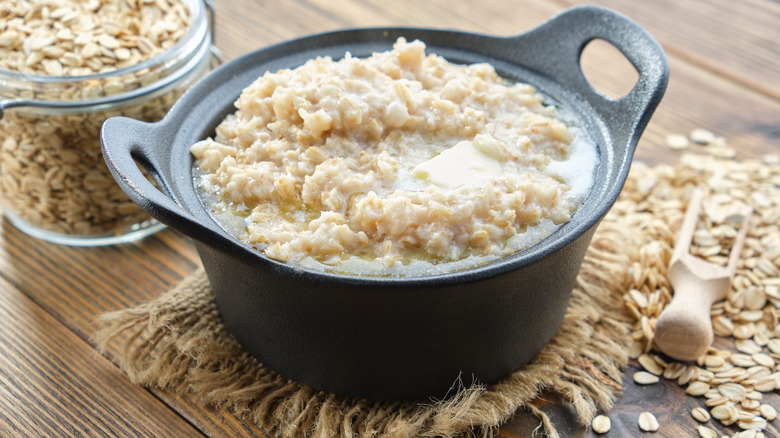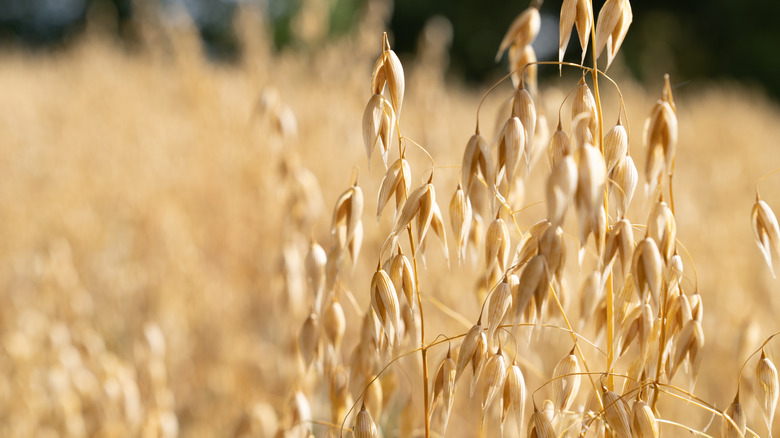Why Oatmeal Is Linked To Celtic Cuisine
Tell that quaker on your oatmeal box to ditch the wide brim hat and don a tam o' shanter. Scotland, and particularly its ancient Celtic residents, deserves credit for popularizing the classic breakfast porridge we all know so well. Although there is evidence that our paleolithic hunter-gatherer ancestors consumed oats as early as 32,000 years ago, the crop was predominantly seen as a pestilant weed rather than a viable foodsource, according to a history compiled by the Oldways Whole Grain Council.
Oats first grew around the Mediterranean Sea and the Jordan Valley, where it had a habit of invading fields of wheat and barley, much to the chagrin of early farmers. Wild oat seeds often got mixed into shipments of wheat and barley, spreading the crop further and further afield. Oat plants proved particularly well-suited to cold, wet climates (which is why today, Russia leads the world in oat production).
Eventually, the Romans gave into the forceful nature of oat plants, but not initially for their own consumption. Oats were originally used to feed livestock, and they became a critical crop for the Roman Empire during the time of the crusades, which saw a massive increase in the use of horses for military campaigns (via The Washington Post). Oatmeal and oat cakes were sometimes made for human consumption as well.
The Romans introduced oats to Scotland
One of the Roman Empire's primary foes was the Celtic people, a collection of loosely-related tribes that had occupied much of Northern Europe since as early as 1200 B.C. (via History). The territory of present-day Scotland was home to a Celtic tribe called the Gaels, who proved to be particularly troublesome to the Romans, often raiding their settlements in Britain, per BBC. The Romans referred to the Gaels as "Scoti," a derogatory term that, oddly enough, Scotland takes its name from. War against the Gaels brought Roman horses to the land, and naturally, oats came along.
According to the Oldways Whole Grain Council, oat crops took Scotland by storm, flourishing in the cold, rainy climate. They were adopted into Celtic cuisine, and ultimately became the staple grain of Scotland, according to The Washington Post, which notes that oats still dominate the region's cuisine, appearing in countless dishes, perhaps most famously haggis. The traditional Scottish way to enjoy oatmeal, which remains popular to this day, is to dip each spoonful in cream or milk, a practice dating back at least as far as the 1700s.

